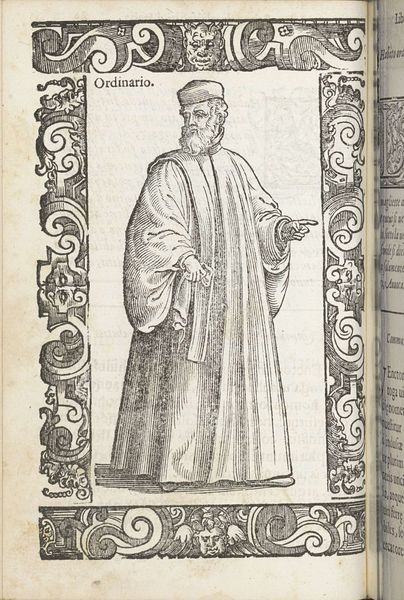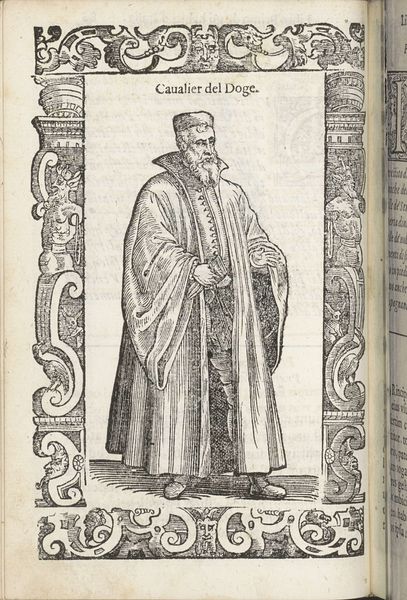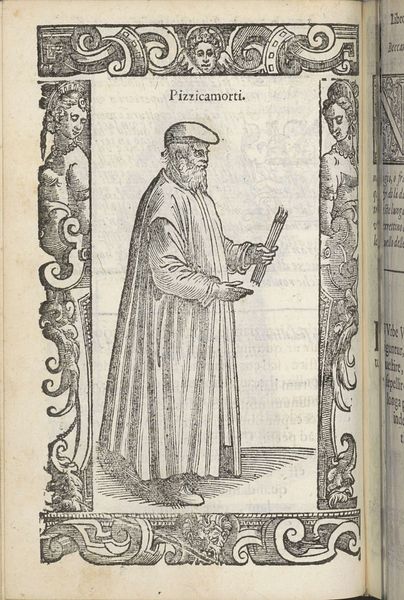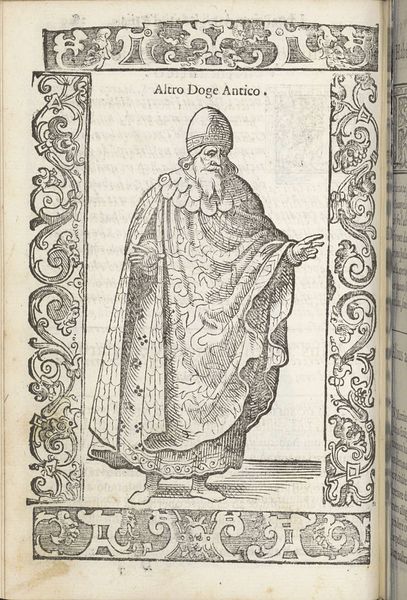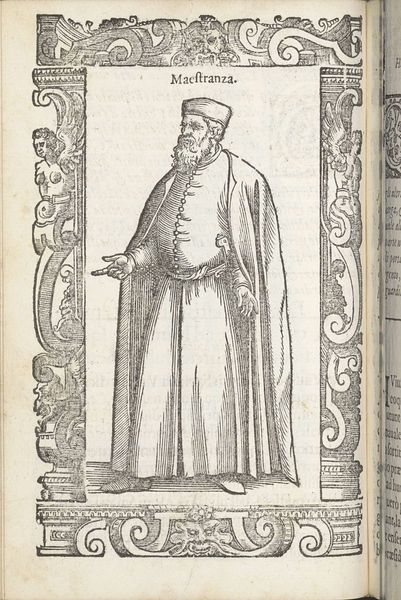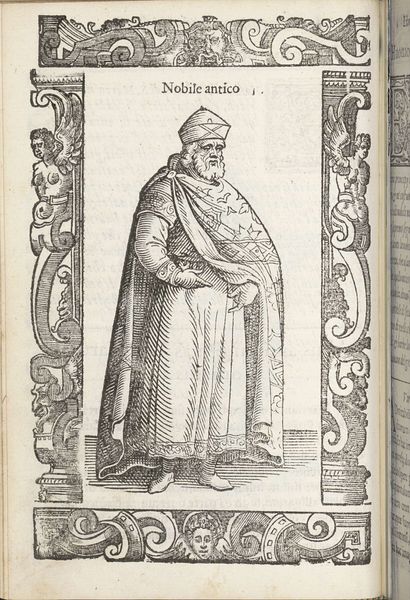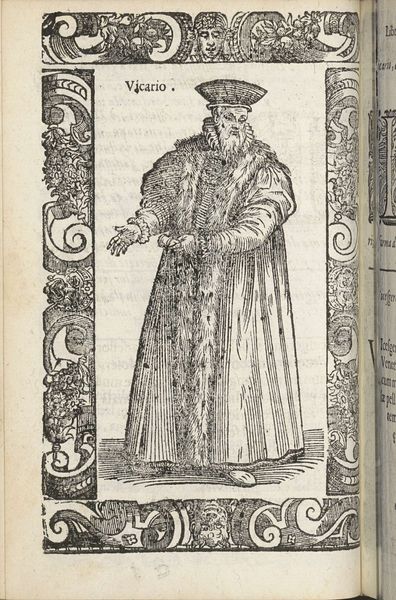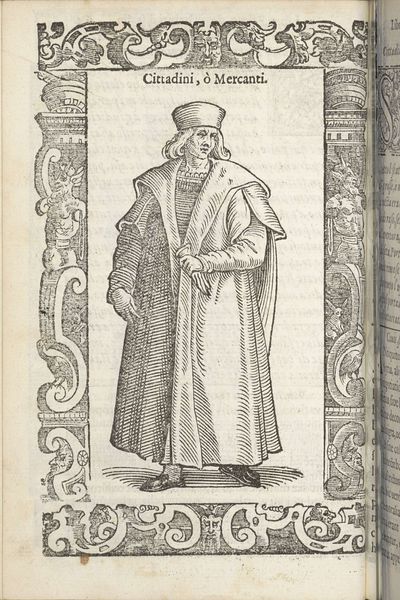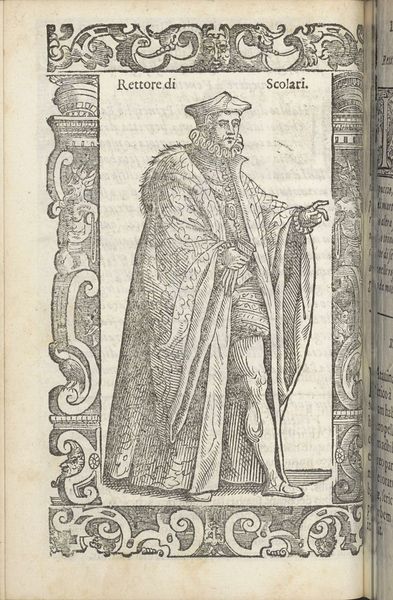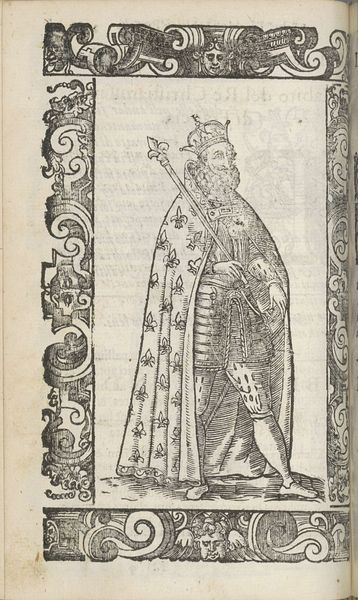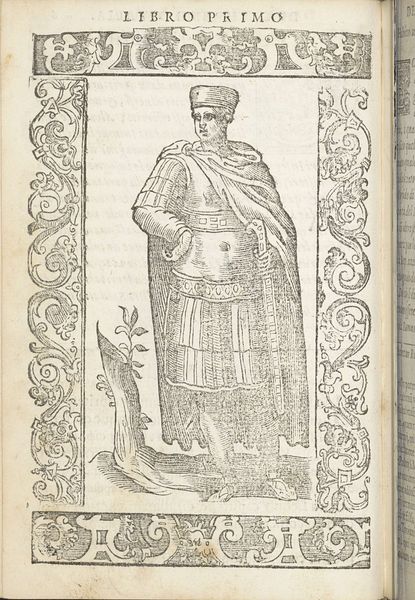
drawing, ink, engraving
#
portrait
#
drawing
#
aged paper
#
toned paper
#
pen sketch
#
old engraving style
#
sketch book
#
11_renaissance
#
personal sketchbook
#
ink
#
pen-ink sketch
#
pen work
#
sketchbook drawing
#
sketchbook art
#
engraving
Dimensions: height 167 mm, width 125 mm
Copyright: Rijks Museum: Open Domain
Curator: What strikes me immediately is the starkness of this image, a somber tone achieved through meticulous lines. Editor: Indeed. We're looking at "Magistrati," a drawing by Christoph Krieger from 1598. It's an ink and engraving work, likely part of a larger sketchbook. The title suggests a depiction of magistrates. Curator: Notice the toned paper providing a muted backdrop, and the refined engraving technique—the intricate pen work shapes form and volume. It creates a compelling contrast. The textures practically vibrate. Editor: And what does that visible technique convey? To me, it emphasizes the labor, literally and figuratively, embedded in processes of governance during the Renaissance. Look closely: these are tools not only for representation but also instruments enacting a societal framework via printed image. Curator: A society keenly aware of hierarchies of craft, definitely. Focusing more closely, though: there's something rigid in this man's stance. It underscores authority but equally hints at its burden and rigidity, particularly within the lines of the heavy robe and the resolute, fixed expression. Editor: Well said. Think also about who produced this: Krieger may well have designed prints reproduced and distributed as mechanisms propagating ideological frameworks legitimizing early modern ruling power, with drawings serving initial blueprints! Curator: Such power rests partly, too, on illusion – on the mastery evident here – from the smallest hatched shadow to the folds constructing an entire identity – suggesting gravity of bearing reflecting positions actually wielded across a real territory far beyond ink tracery within some unbound paper leaves. Editor: And just the materiality: engraving's reproducible essence mirrors an ambition aimed well outside some elite's confines – it must infiltrate culture fundamentally impacting subject positions relative these authorial functions too! Curator: Reflecting upon our discussion, it is the convergence between the technique and that austere composition that defines this work, almost an echo to us from then. Editor: Absolutely; by appreciating both its artistry and its origins, this artwork yields great value about societal constructs.
Comments
No comments
Be the first to comment and join the conversation on the ultimate creative platform.

